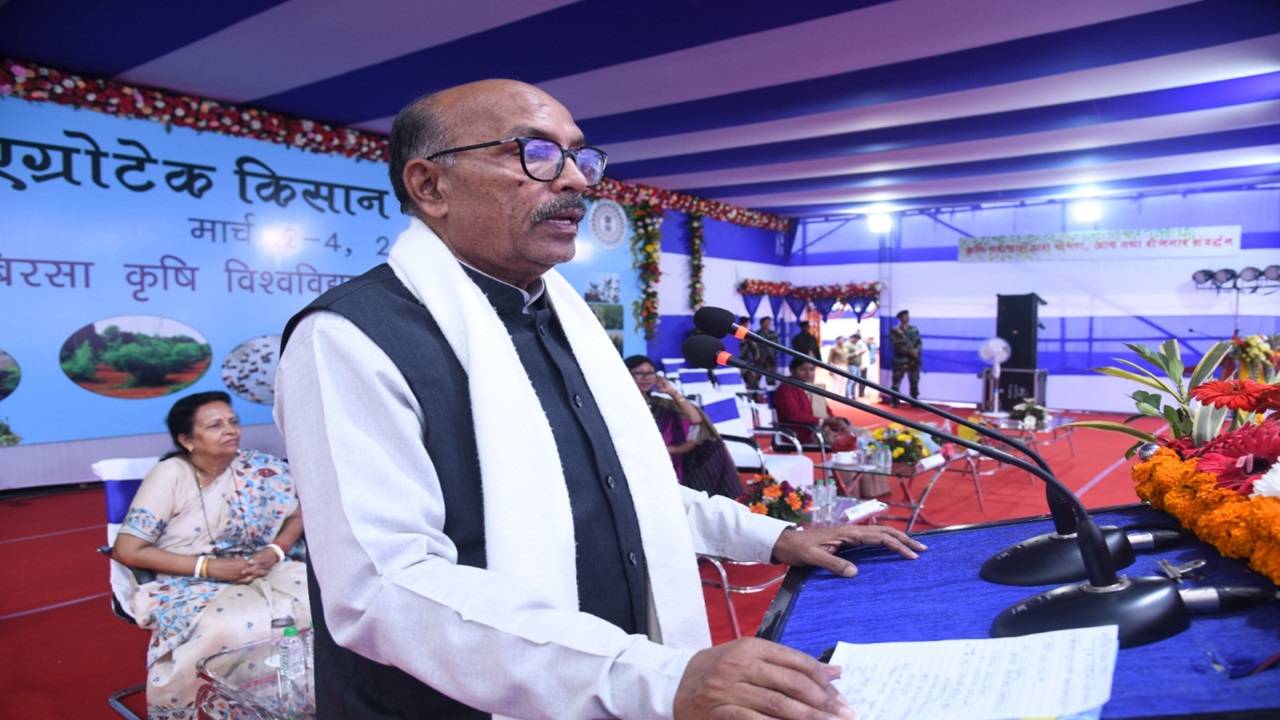
The Agrotech Kisan Mela concluded at Birsa Agricultural University (BAU), Ranchi on March 4, 2024, leaving behind a trail of inspiration and innovation for the farming community. Over three days, the event brought together stakeholders from various sectors of agriculture, emphasizing sustainable practices, the importance of soil health, and the promotion of millets.
Emphasizing Sustainability and Soil Health
Union Agriculture and Farmers Welfare Minister Arjun Munda, during the inauguration, underscored the imperative of balancing ecological sustainability with agricultural advancements. He highlighted the necessity of nurturing soil health and minimizing environmental impact to pave the way for a second green revolution in India. Reflecting on the lessons from the first Green Revolution, Munda stressed the importance of avoiding past mistakes that led to soil degradation and an increase in diseases, despite the boost in agricultural productivity.
Reviving Millets and Honoring Innovations
The minister also touched upon the global challenges of climate change and global warming, advocating for a return to nutrient-rich millets, once a staple of Indian diet and culture. By celebrating the International Year of Millets, Munda noted, that Prime Minister Narendra Modi has reignited interest in these vital crops, positioning them as a solution to both health and environmental challenges.
In a gesture of appreciation towards ground-level innovations and hard work, the event honored five progressive farmers from various districts of Jharkhand for their contributions to innovative agriculture. This recognition highlighted the event's focus on practical, actionable solutions to the challenges facing today's farmers.
Fostering Agricultural Development and Potential
The fair wasn't just about discussions and recognitions. Ranchi MP Sanjay Seth and Dr. Himanshu Pathak, Director General of the Indian Council of Agricultural Research (ICAR), emphasized the agricultural potential of Jharkhand and the broader region. They pointed out the state's capabilities in horticulture, animal, and fishery production, advocating for policy support and economic cooperation to harness this potential fully.
The fair also served as a platform for showcasing advancements in agricultural technology, products, and services, with participation from various agricultural universities, research institutes, and other stakeholders. Over 130 slots were filled with displays and demonstrations, providing a comprehensive view of the state of agriculture and the innovations driving it forward.
Moreover, the event facilitated direct interactions between farmers and experts, allowing for an exchange of knowledge and solutions to farming challenges. This initiative reinforced the mela's role as a bridge between agricultural research and practical application, ensuring that advancements reach the fields where they are most needed.
















